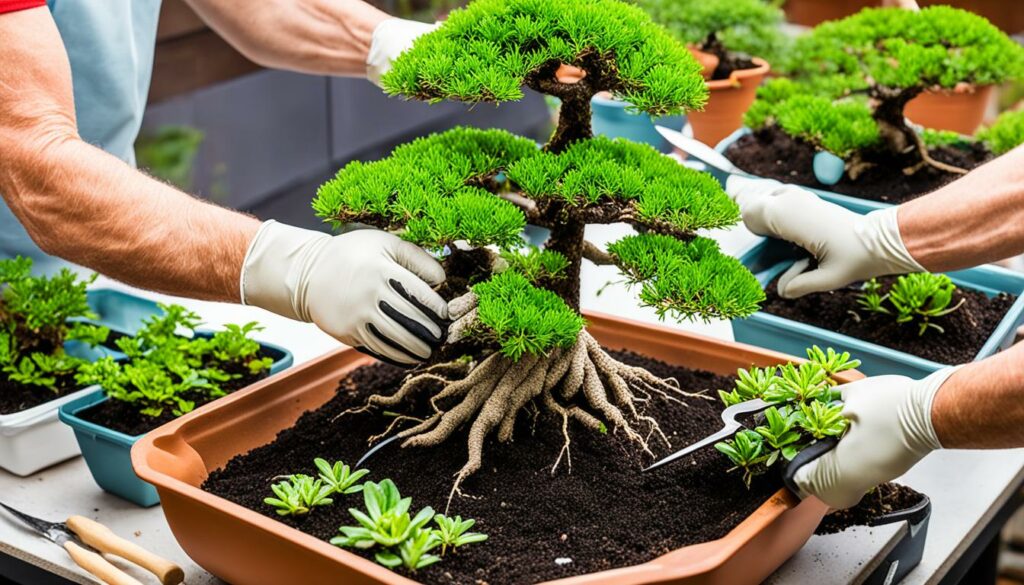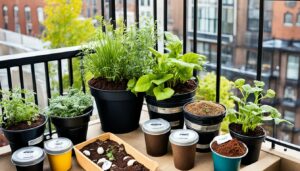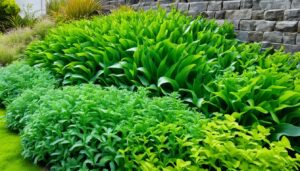In the heart of the bustling city, amidst the concrete and steel, there is a sanctuary where time seems to slow and nature is held in the palm of your hand. In a softly lit corner of an office, on a handcrafted wooden desk, a miniature tree bends and twists with the grace of its full-grown counterparts. This bonsai tree is the culmination of a meticulous art form that blends cultivation with creativity, a tradition that has been delicately passed down through generations. Nestled in a small pot, yet projecting an air of ancient wisdom, this tree is more than mere decoration; it’s a personal testament to patience and attention to detail, traits that are the essence of the bonsai journey.
The art of bonsai is not reserved for the few with mystical green thumbs or those who whisper to the leaves. It is an approachable hobby, one that guides you through bonsai basics, invites beginners into starting with bonsai, and ultimately allows anyone to partake in the profound experience of growing bonsai. From understanding bonsai techniques to learning to listen to the subtle needs of each tree, this art form is as educational as it is enriching.
For those prepared to delve into the world of bonsai, remember that one does not simply grow a bonsai; one cultivates patience, nurtures understanding, and grows alongside their tree. Now let’s uncover the fundamentals that set the stage for you to create your own bonsai masterpiece. Travel with us on a journey through the art of bonsai, where each step instructs and each day brings closer connection to the tiny yet immense world of bonsai trees.
Key Takeaways
- Start with comprehending bonsai basics to successfully cultivate these living sculptures.
- Choosing the right bonsai tree species is crucial, influenced by whether it will live indoors or outdoors.
- Patience is more than a virtue in bonsai; it’s a necessity, especially when growing from seed.
- Discover the accessible path to beginning with bonsai, using starter kits and pre-bonsai stock.
- Bonsai is not only a form of gardening; it is an immersive art of patience, care, and beauty.
Selecting Your First Bonsai: A Guide to Miniature Tree Cultivation
Embarking on the bonsai journey is both an art and a science, rooted in centuries-old tradition yet ideally suited for modern-day plant enthusiasts. The vital first step involves understanding whether your environment is better suited for indoor bonsai care or calls for outdoor bonsai tips and preparations.
Indoor vs Outdoor Bonsai: Understanding Your Environment
The realm of bonsai tree care requires a fundamental decision: will your bonsai reside indoors or out? Subtropical varieties, thirsting for consistent light and warmth, thrive as indoor bonsai, while a diverse selection of non-tropical trees benefit from the natural rhythms of outdoor settings. Let climatic nuances guide you; placing a bonsai in its native climate conditions sets the stage for successful bonsai growing.
Choosing the Right Species: The Key to Bonsai Success
Choosing bonsai species is no trivial matter. With options ranging from the forgiving Ficus to the stately Juniper, bonsai tree selection is a balance of personal style preference and weather patterns of your locale. Each species rewards careful adherence to its unique requirements—one’s success in cultivating bonsai leans heavily on this symbiotic relationship.
Bonsai Starter Kits and Nursery Stock: Jumpstarting Your Journey
For beginners, it’s advisable to explore bonsai starter kits or nursery stock—a gateway to the world of bonsai that invites hands-on experience with less investment of time. These options offer an immediate connection to the craft, providing nascent enthusiasts with the fertile ground for growth and experimentation.
Bonsai Basics, Miniature Tree Cultivation, Bonsai Care Techniques, Starting With
Maintaining the classic beauty of bonsai trees encapsulates a realm of horticultural discipline, where pruning bonsai trees stands paramount. The perfect aesthetic of these miniature marvels relies heavily on this crucial care technique. To achieve the desired look, specific tools like concave cutters are recommended for clean cuts that encourage proper healing. Springtime brings with it the prime season for pruning, tailored to meet the individual needs of your bonsai species.

Alongside pruning, repotting bonsai plants is essential, roughly every two years, to foster a healthy living environment and prevent root entanglement. While repotting, one must not forget the importance of selecting an appropriate soil mixture; it is the foundation that supports the intricate web of life within your bonsai. Whether delicate maples or resilient pines, all bonsai require a harmonious blend of soil that caters to their particular needs.
- Watering bonsai is more than a routine—it’s an art. Each watering session should be comprehensive, drenching the root mass thoroughly.
- Varied bonsai species will demand different watering schedules, yet overwatering or underwatering can spell disaster for these meticulous creations.
The delicate equilibrium of bonsai care techniques extends to include judicious fertilization. Growth periods are to bonsai what spring is to nature; a time of renewal and invigoration, calling for a calculated nourishment strategy.
The miniature stature of bonsai does not belie the colossal scale of care they require. It’s a labor of love, where precision begets living art.
Placement too commands vital attention, as abrupt environmental changes from outdoor to indoor settings can be harmful. Ensuring that your bonsai receives just the right amount of sunlight, and is sheltered from the extremes, can make all the difference in its development. Conclusively, the longevity and well-being of your bonsai rest significantly on a well-founded balance of these care components.
Conclusion
The journey into the world of bonsai extends far beyond traditional gardening, evolving into a living craft bonsai that seamlessly blends artistic skills with a tranquil horticultural practice. The daily nurturing of these miniature trees becomes a meditative bonsai practice, inviting calm and reflection into every aspect of your life. As you step into the intricate cycle of bonsai daily care, you discover a unique way of connecting with nature, where every watering, pruning, and styling session encourages a deeper sense of presence and mindfulness.
Incorporating Bonsai into Your Daily Life: From Art to Zen
Bonsai isn’t just an aesthetic pursuit; it’s a path to tranquility. With each snip of the shears and adjustment of a branch, there’s a moment of peace, a hiatus from the bustle of daily life. This cultivation of patience and precision is emblematic of bonsai as a living art; a harmonious rendezvous of nature’s elegance and the gardener’s intent, enabling an inner conversation with the flora that thrives under your care.
Connecting with the Bonsai Community: Expanding Your Knowledge
Delve into the heart of the bonsai community and you’ll find a trove of experiences and skills shared freely among enthusiasts. Local bonsai clubs become hubs of camaraderie and discovery, while guidance from bonsai masters enriches your own bonsai expertise. Whether connecting in-person or through online forums, these passionate collectives welcome everyone, from beginners to seasoned growers, fostering an environment where knowledge blossoms and experiences are cultivated.
The Continuous Journey: Growing Alongside Your Bonsai
As bonsai trees flourish and mature, so does the gardener, embarking on a lifelong bonsai cultivation filled with lessons and personal growth. Patience is cultivated, artistry is refined, and the understanding of nature’s rhythms is deepened. Every aspect of your bonsai journey echoes the stages of personal bonsai progression, demonstrating that the process is never static but always moving, always teaching. Bonsai symbolizes more than just the care for plants; it is a metaphor for enduring beauty and the constructing of a living legacy that continues to inspire and delight.








